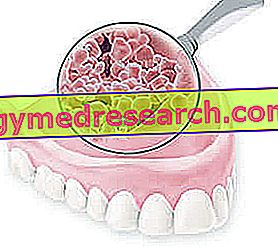Generality
Cryolipolysis is a non-invasive aesthetic medicine treatment, which allows the reduction of localized fat through the use of cold.
The method is implemented through a particular device that allows to act on specific regions of the body and foresees to control the cooling process of the adipose cells to trigger a lipolysis.

The procedure is not painful and allows you to resume your daily activities immediately. However, only small areas can be treated at a time, so more sessions are needed.
Action mechanism
"Crio" derives from the Greek word " kryos " which means "ice" and refers to the mechanism of action of the procedure.
In fact, cryolipolysis is based on a simple thermal principle, according to which the fat undergoes a reduction, if "frozen".
In this way, the adipose cells (adipocytes) that are found in the subcutaneous tissue, being sensitive to cooling, are subjected to a crystallization process, followed by a spontaneous, slow and gradual lysis (apoptosis).
The cell death of adipocytes "damaged" by thermal stress causes the activation of inflammatory processes, the "digestion" of apoptotic fat tissue and the release of lipids contained in degraded fat cells in 2-8 weeks. The latter are transported by the lymphatic system to be processed and eliminated, as happens with food fats.
Cryolipolysis is particularly indicated for localized fat deposits and is suitable for body remodeling.
| What happens after the treatment | |
| After 2 days | In the first 2 days after cryoplipolysis, the inflammatory process begins. |
| After 7 days | Within a week, intense lobular panniculitis develops. |
| After 15 days | About two weeks after the session, the adipocytes are surrounded by lymphocytes, mononuclear cells and other inflammation mediators. In this phase, the fat cells have started the process that leads to the reduction of their size. |
| After 30 days | From the 15th to the 30th day, inflammation induces a phagocytic process: macrophages begin to digest apoptotic adipocytes to facilitate their progressive elimination from the body. |
Safety
The principle behind cryolipolysis exploits the premise that subcutaneous fat cells, under carefully controlled conditions, are more vulnerable to the effects of cold than surrounding tissues (skin, dermis, muscles and blood vessels). Furthermore, this technology does not traumatize the nerves and bones in the area.
Cryolipolysis is performed with a device called Cool Sculpting (Zeltiq) which has received FDA approval (Food and Drug Administration) as "non-invasive technology capable of reducing adipose tissue".
Therefore, the equipment for cryolipolysis was developed to act only and solely on fat cells, without causing damage to the other anatomical structures present in the treated region.
The method was also studied in in vitro and animal models; in addition, randomized controlled clinical trials have been performed in humans.
method
The person receiving the treatment remains lying on a couch, then a gel is applied in the area to be subjected to cryolipolysis.
The operator positions a silicone cup - a sort of large suction cup - on the part. At this point, the machine sucks, with a calibrated suction, the fold of fat to be treated inside the cup, then the cooling phase of the area begins.
The person remains in this position for about an hour, during which the device reaches the temperature set by the doctor and keeps it constant in the fat.
The treatment is painless and the patient feels at best a slight discomfort due to the tension of the fabric due to the "vacuum" effect, in addition to a feeling of cold.
During the session, it is possible to treat only one area at a time. If you have to work on your hips, you need to plan two one-hour sessions, even on the same day.
After the treatment, redness and a feeling of increased sensitivity will be evident in the treated area, which tends to disappear within a few hours. The first results begin to be visible already within 15 or 20 days.
Where does the fat go? The fat "frozen" after three days begins to lose its vital functions. In the following 15-60 days, the inert cells are naturally eliminated through the lymphatic system, like any waste element. Other possible methods of elimination of adipocytes undergoing apoptosis include the activation of inflammatory processes and the "digestion" of fat cells exposed to cooling, the hepatic detoxifying pathway and the gastrointestinal canal.
Application areas
Cryolipolysis is particularly indicated for localized fat on the abdomen, hips, arms, inner and outer parts of the thighs, knees and back.
Depending on the depth of the adipose tissue and the reduction of the desired fat, one or two treatments with an interval of 2-4 months may suffice. However, the doctor will indicate the recommended times and intervals between the various sessions.
Advantages
Cryolipolysis is a non-surgical alternative to liposuction. This technique is performed without a scalpel, does not damage the skin and surrounding tissues, does not cause pain and leaves no scars. Furthermore, cryolipolysis does not cause problems deriving from the reabsorption of fat, as happens with other invasive methods performed with cannulas.
As a rule, anesthesia is not needed and there is no need for hospitalization or special recovery periods. After treatment, the patient can return to his or her normal work and social activities.
Side effects
Cryolipolysis has proven to be a safe method for body remodeling and usually involves only minimal discomfort.
When they appear, the side effects are generally mild and resolve in a relatively short time. After treatment, the skin may remain red for a few hours and, in some cases, temporary bruising, tingling, local numbness or cramps may appear which resolve within 7-14 days.
Furthermore, for some people, there may be slower than expected recovery. In about 0.1%, late-onset pain may occur - 2 weeks after the procedure - which resolves spontaneously, without treatment.
| Main differences between non-invasive methods for body remodeling | ||||
| Technology | Mechanism of action | Pain level | Side effects | Necessary treatments (n) |
| High intensity focused ultrasound | Coagulative necrosis | High | Extended bruises and swelling up to 2 weeks | 1-2 |
| Monopolar radiofrequency | Apoptosis | Middle | Redness and swelling for 1-3 days | 2-3 |
| Acoustic wave therapy | Apoptosis | null | Nobody | 8 |
| Cryolipolysis | Apoptosis | Bass | Numbness and bruising for 7-14 days | 1-2 |
costs
The cost for a cryolipolysis session is about 750 euros, taking into account that the price may vary depending on the area to be treated and the medical center where it is performed.
Limitations
Cryolipolysis is not designed to treat weight problems, but rather to treat blemishes due to localized fat.
The best candidate is someone who is healthy but has modest excess fat that he would like to remove. Therefore, cryolipoplysis is not ideal for the obese patient and the procedure does not represent an alternative to diet or the adoption of a healthy lifestyle.
Results
The results of cryolipolysis begin to be noticeable after 2-3 weeks of treatment. Depending on the initial thickness of the adipose tissue, the average loss will be between 3 and 15 mm. At the level of the abdomen, we speak of a reduction of the circumference of about 2 centimeters. More precisely, in the treated area, in terms of percentage, the equivalence of loss of adipose tissue is 25% for each session.
The results are already evident with an application, but if this should not be sufficient, a second treatment can be performed after 2-4 months.



